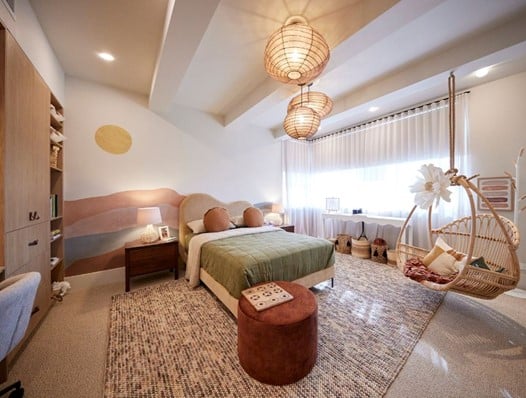When it comes to kids’ bedrooms, there’s a common misconception: they don’t necessarily have to be kid-centric. In fact, they probably shouldn’t be. Not everyone has children, and not everyone wants their living spaces dedicated to the whims of little ones. Moreover, you don’t need to be a parent to understand what people, young or old, desire in a bedroom.
How child-like is too child-like for a kids’ room (or more aptly, a spare bedroom)?
If you want your property to attract as many potential buyers as possible when you go to sell, it should cater to various needs, not just your personal preferences.
I know many downsizers who seek homes with extra bedrooms that can serve as a second study, a TV room, a music room, a guest room, a gym, or simply a refuge for a snoring partner. Likewise, there are those without children who appreciate the space of a “larger family-style” home, minus the beanbags.

In addition, many people with children, spanning from babies to adults in their 30s, expect a room in their parent’s house, whether rightly or wrongly. So, when it comes to kids’ bedrooms or spare rooms, it’s crucial to distinguish between needs and wants.
A rock-climbing wall might thrill a six-year-old, but it’s unlikely to impress a 14-year-old. A basketball-themed room may resonate with some, but it might not sit well with a discerning 16-year-old.

When it comes to children’s rooms, the key is to keep the fixed elements neutral, reserving whimsical styling for personal touches.
While kid’s pester power is a real phenomenon, it’s doubtful that a homebuyer would choose a property solely because their child fell in love with a particular bedroom. Most parents have limits.

